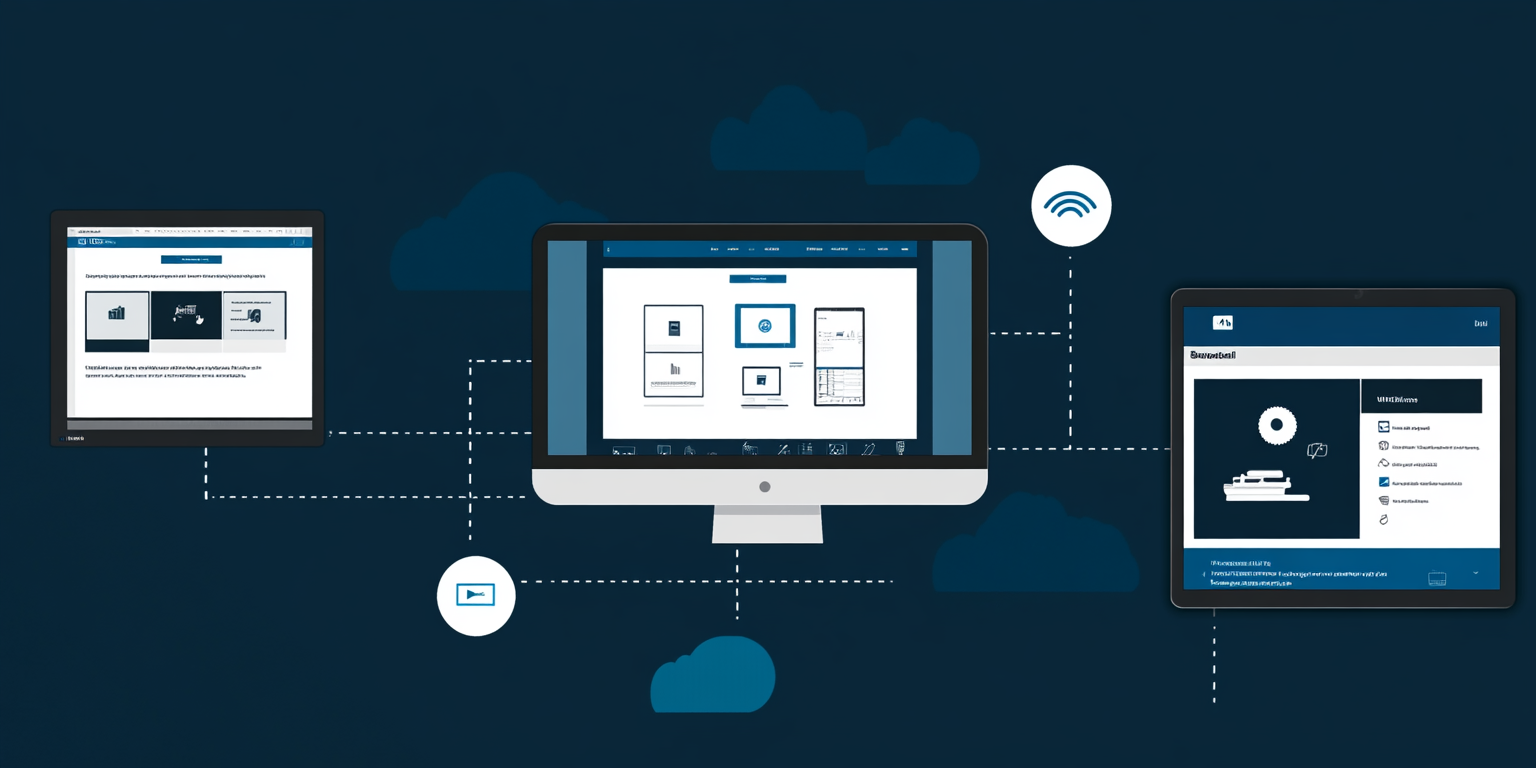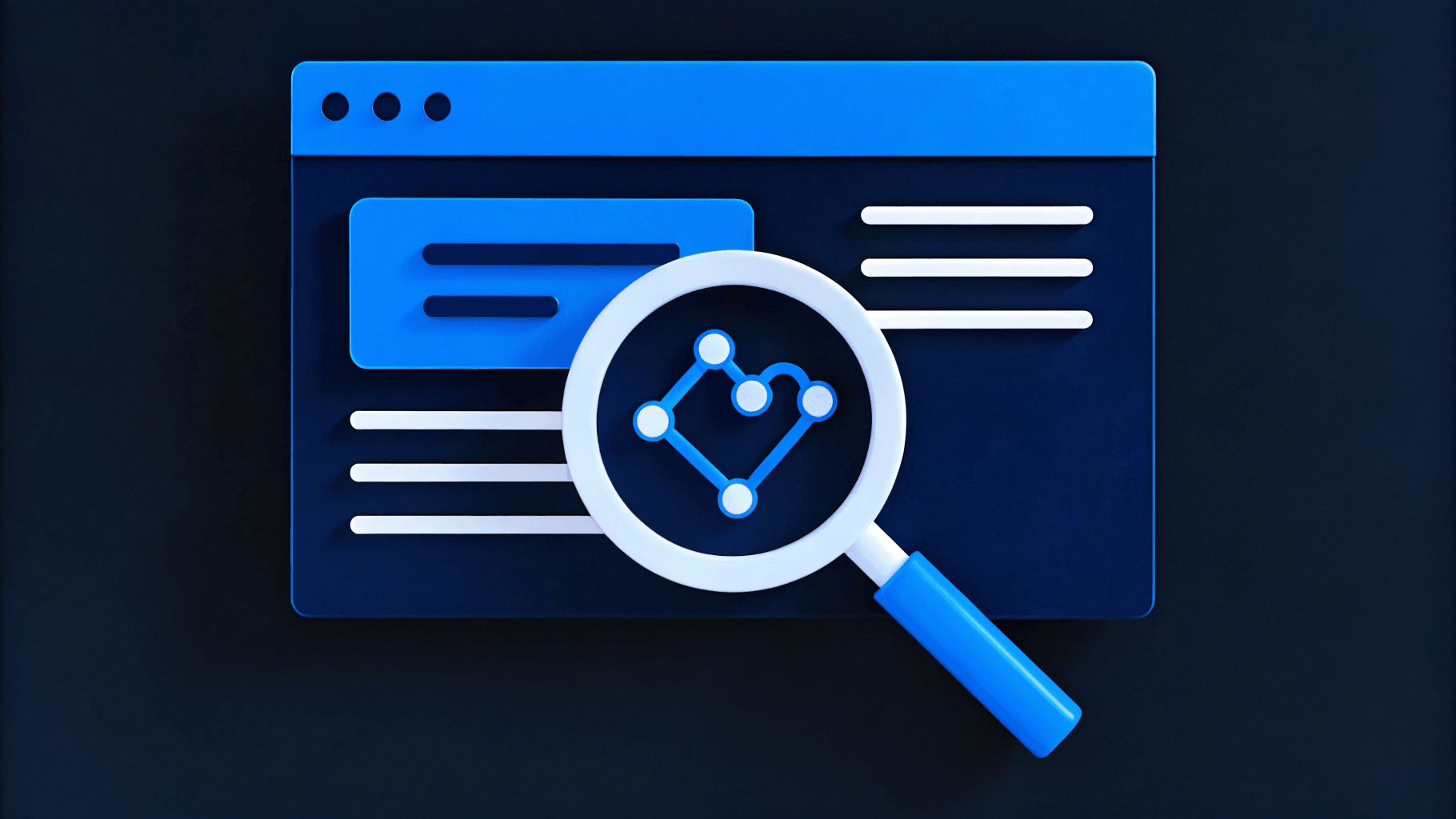Friday, July 11, 2025
AI Design Systems: How B2B Brands Scale Consistency Without Slowing Down

Most B2B teams have brand guidelines, but very few apply them consistently. Style drift creeps in through one-off campaigns, misused components, and scattered updates. The result is a disjointed experience that erodes trust and extends sales cycles—prospects notice when your product demo doesn't match your website, or when your sales deck uses different fonts than your case studies.
Traditional brand governance doesn't scale. Manual reviews create bottlenecks, style guides sit unused, and design debt compounds with every sprint. AI design systems solve this by embedding brand enforcement directly into your workflows, catching deviations in real-time and maintaining consistency without adding review cycles.
This shift reduces the overhead of brand enforcement while accelerating production. Teams move faster, stay consistent, and protect brand equity—ultimately shortening deal cycles when prospects encounter a cohesive experience across every touchpoint.

When AI Design Systems Make Sense
Not every B2B team needs AI-powered design governance. Traditional style guides and manual reviews work well for smaller organizations with simple brand requirements and limited asset production. However, as companies scale and launch more campaigns across multiple channels, manual brand enforcement becomes a significant bottleneck that can actually slow business growth.
The tipping point typically occurs when brand inconsistencies start affecting measurable business outcomes—longer sales cycles, confused prospects, or design teams spending more time on revisions than new creation. Before diving into implementation, assess whether your team needs this approach.
AI design systems deliver the most value when you have:
- Scale complexity: Multiple teams shipping assets weekly across different tools and platforms
- Consistency gaps: Measurable brand drift that's affecting conversion rates or deal velocity
- Review bottlenecks: Design approvals are taking days instead of hours due to manual compliance checks
- Technical readiness: Existing design tokens, component libraries, or content management systems that can integrate with AI tools
If you're a small team with simple brand requirements, traditional style guides and manual reviews may be sufficient. But if brand inconsistency is slowing your sales process or overwhelming your design team, AI governance becomes essential.
How AI Enforces Brand Standards in Real-Time
AI design systems apply brand rules automatically across every asset, layout, and component. Instead of catching problems during review, they prevent violations from being introduced in the first place.
Design Compliance at the Source
AI plugins in Figma detect unauthorized color usage, typography mismatches, and inconsistent spacing as designers work. When someone selects a non-approved color or changes spacing outside your defined scale, the system flags it immediately and suggests alternatives from your token set.
Business impact: Design reviews drop from days to hours because assets arrive already compliant. Sales teams get consistent materials faster, and prospects see a professional, cohesive brand experience.
Copy and Tone Enforcement
Large language models rewrite UI copy and marketing text based on pre-defined voice guidelines. If your brand avoids exclamation marks or prefers second-person language, the model automatically adjusts suggestions to match your tone.
Business impact: Messaging stays consistent across all customer touchpoints—from website copy to email campaigns to product interfaces. This consistency builds trust and reduces the cognitive load on prospects evaluating your solution.
Automated Global Updates
When a brand element changes—like a button style or heading font—AI systems detect where that token is used and apply changes automatically across all linked assets. No manual hunt-and-replace across hundreds of pages.
Business impact: Brand updates roll out instantly and uniformly. When you launch a new campaign or rebrand, every asset reflects the change simultaneously, preventing the mixed-message problem that confuses prospects.

Implementation: Building AI Into Your Workflow
The most common implementation mistake is trying to layer AI tools on top of disorganized design processes. Without structured foundations—clear design tokens, documented component libraries, and consistent content workflows—AI systems can't effectively enforce standards because the standards themselves are unclear or inconsistently applied.
Successful AI design systems require thoughtful integration with your existing tools and processes, not wholesale replacement of them. The goal is to automate the enforcement of rules you've already established, not to create those rules from scratch. Here's how to implement each capability:
Set Up Real-Time Design Validation
The foundation of AI design governance is catching violations as they happen, not after assets are completed. This requires establishing clear design tokens and connecting them to validation tools that work inside your design environment.
- Store design tokens in a central system (Style Dictionary, Figma tokens, or your design system repository)
- Install AI-powered linters that validate designs against your token set
- Configure automatic suggestions and warnings inside design tools
- Connect validation rules to your component library and style guide
Implement Copy Governance
Inconsistent messaging confuses prospects and dilutes your value proposition. AI copy governance ensures every piece of text—from button labels to email subject lines—aligns with your established voice and tone guidelines.
- Define clear voice rules with specific examples and anti-patterns
- Create prompt templates aligned with different audience segments and use cases
- Integrate LLM-based tools into your CMS, design platform, or content workflow
- Train models on approved copy samples from high-performing campaigns
Enable Automated Updates
Manual updates across hundreds of pages and components create risk and waste time. Automated update systems ensure brand changes deploy consistently without breaking existing layouts or introducing new inconsistencies.
- Connect design systems to your front-end framework through component libraries
- Use automation tools to scan for token usage across all properties
- Set up staging environments where changes can be tested before global deployment
- Create rollback procedures for when updates introduce unexpected issues
Track and Prevent Drift
Brand drift happens gradually, then suddenly. Tracking systems help you identify where standards are slipping before small deviations become major inconsistencies that affect customer experience.
- Instrument your component library with usage tracking
- Define allowed variants and flag unauthorized modifications
- Generate weekly reports showing where brand drift is emerging
- Prioritize fixes based on page importance and traffic volume
Governance: Maintaining Standards Across Teams
Manual brand reviews become mathematically impossible at scale. If your design team reviews 20 assets per week and each review takes 30 minutes, that's 10 hours of pure review time—before accounting for revision cycles, feedback loops, and the inevitable back-and-forth when standards aren't clear. As teams grow and campaign velocity increases, this review bottleneck can slow business growth.
AI governance layers solve this by shifting from reactive review to proactive enforcement. Instead of catching problems after assets are created, these systems prevent violations from being introduced in the first place. When multiple teams ship assets weekly, AI governance layers scan copy, designs, and components for off-brand usage in real-time, flagging issues before they reach production.
Establish Clear Ownership
AI systems flag violations, but humans make the final decisions. Without clear ownership and decision-making authority, teams waste time debating edge cases and exceptions instead of maintaining forward momentum.
- Assign specific owners for design tokens, component libraries, and content rules
- Create escalation paths for when AI flags complex edge cases
- Document decision-making authority for brand exceptions and new patterns
Embed Governance in Daily Workflows
The most sophisticated AI governance system fails if teams ignore its alerts or treat them as optional suggestions. Success requires integrating brand enforcement into the tools and processes teams already use every day.
- Route AI alerts into Slack or your project management tool
- Schedule brief weekly syncs to review flagged violations and approve new requests
- Publish automated changelogs that track updates to design systems and content rules
- Monitor usage trends to deprecate unused components and standardize high-use patterns
Measure Impact
What gets measured gets managed. Without clear metrics, it's impossible to know whether AI design systems are actually improving brand consistency or just creating more administrative overhead.
- Track time from design start to approval
- Monitor brand consistency scores across different teams and projects
- Measure conversion rates and deal velocity improvements from cohesive brand experiences
ROI: Measuring Business Impact
The true value of AI design systems isn't just operational efficiency—it's the business outcomes that result from consistent, professional brand experiences. When prospects encounter cohesive messaging and visual design across every touchpoint, they move through the sales funnel faster and with greater confidence. However, measuring this impact requires tracking both direct efficiency gains and indirect business improvements.
Most companies focus on the obvious metrics like time savings and error reduction, but the bigger ROI comes from improved conversion rates and shorter sales cycles when brand consistency reduces friction in the buyer journey. B2B companies implementing AI design systems typically see:
- Reduction in design review time as assets arrive pre-validated
- Faster campaign launches when brand updates deploy automatically across all touchpoints
- Improved conversion rates from consistent messaging and visual hierarchy
- Shorter sales cycles when prospects encounter cohesive brand experiences
The key is measuring both efficiency gains (faster production) and effectiveness improvements (better business outcomes from brand consistency).
Limitations and Considerations
AI design systems aren't a magic solution that transforms chaotic design processes into perfect brand consistency overnight. They're sophisticated tools that amplify and automate existing good practices, but they can't create structure where none exists. Understanding these limitations upfront helps set realistic expectations and avoid common implementation pitfalls.
The technology works best as an enhancement to solid foundational practices, not as a replacement for strategic thinking about brand standards. AI systems work best when you have structured foundations in place. They're less effective when:
- Your brand guidelines are vague or inconsistently documented
- Design tokens and component libraries don't exist yet
- Teams are using completely different tools and platforms
- You need rapid experimentation that might conflict with brand rules
Additionally, AI systems can generate false positives—flagging acceptable variations as violations—or miss subtle brand infractions that require human judgment. Plan for human oversight and clear escalation processes.
Building Your Brand's Competitive Advantage
AI design systems deliver the most value when built on solid technical foundations. If your current stack relies on manual processes, scattered assets, or inconsistent component libraries, start there first.
Consider working with specialists who can implement modular, composable frameworks that store tokens, components, and content models as structured data. This foundation makes it straightforward to layer in AI for real-time governance, automated updates, and faster content production across regions and teams.
The goal isn't just faster design production—it's creating a brand experience that builds trust, reduces friction, and accelerates deals through consistent, professional touchpoints at every stage of the buyer journey.
If your current stack is slowing you down or your brand consistency is starting to slip, we can help. Schedule a quick assessment with our team. We’ll map your current design ops maturity, recommend the right AI integrations, and show you what’s possible when governance and velocity work together.



